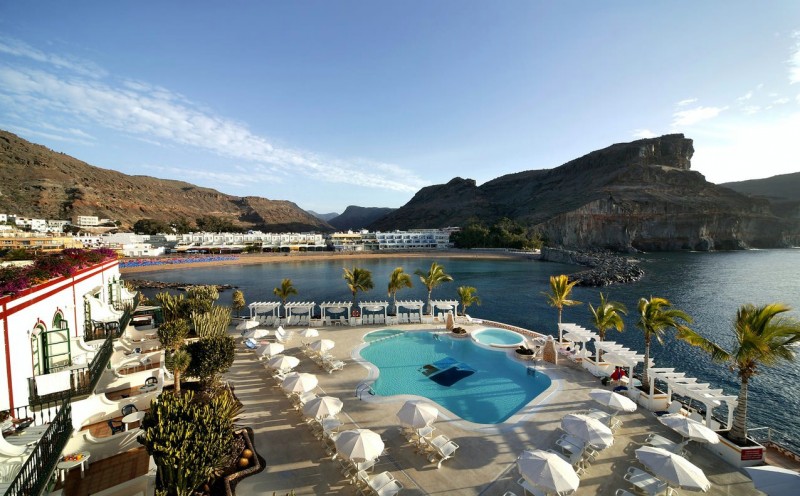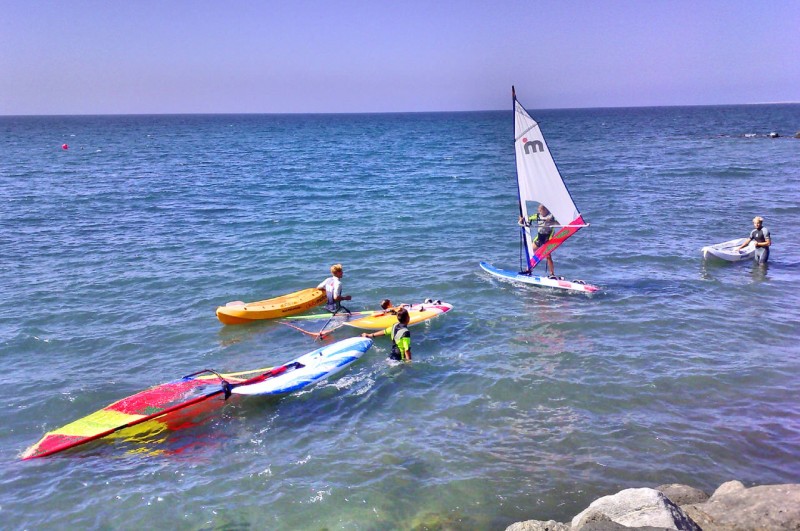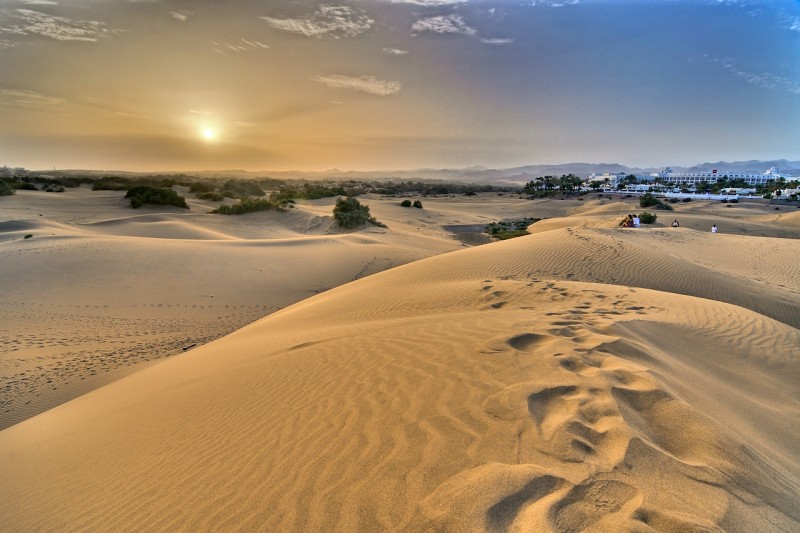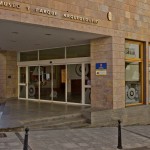
Gran Canaria is the third largest island of the Canary Islands archipelago, with an area of 1,560.1 km². The round-shaped island has a diameter of about 50 km. All the Canary Islands were formed by volcanic activity, and Gran Canaria is no exception.
The extinct volcano Pico de las Nieves, located in the central part of the island, is the highest point at 1,949 m. The capital of the island is the city of Las Palmas de Gran Canaria (also the second capital of the Canary Islands).
Check out my other travel guides on the Canary Islands: Tenerife, La Palma, El Hierro, Fuerteventura, Lanzarote.
Gran Canaria has such a rich flora and fauna, diversity of geographical and climatic zones that it has been called a “miniature continent”. The mountainous landscape of the central part of the island is crossed by arid ravines leading to the coast. Since strong water currents form in the ravines during heavy rains, the populated parts of the valley are usually well fortified.

The main competitor of Gran Canaria for the title of the most popular island of the Canary archipelago is Tenerife. Although the number of tourists visiting these islands annually is approximately the same.
Climate of Gran Canaria
One of the climatic features of the island is the sharp change in natural zones: high, forested mountains with snowy peaks transition to sunny beaches. The cold northern winds do not penetrate the southern part of the island thanks to the mountain peaks, so the climate in the southern part of Gran Canaria is dry and warm. In winter, most of the island is warm (+19…+23 °C), and in summer it’s hot (+24…+30 °C). The water temperature is suitable for swimming all year round (17 – 23 °C).
Gran Canaria Beaches

Gran Canaria’s coastline is 236 km long, but the length of the developed beaches, located mainly in the southern part of the island, is only 15 km. All beaches on the island are municipal property and therefore free. Fees are only charged for renting sun loungers and umbrellas. Gran Canaria beaches impress with their color range – the golden sands of Playa del Ingles and the snow-white sands of Anfi del Mar and Amadores alternate with the dark sands of the volcanic coast.
The island’s calling card is the most spectacular and largest 4 km long Maspalomas beach located in the southern part of the island. The island’s capital is Las Palmas de Gran Canaria. On the southwestern coast, tourists will be delighted with the light sand on the beaches of Puerto Rico and Puerto Mogan, brought from the Sahara. In picturesque and often hard-to-reach places on the island, you can find many small “wild” beaches with gray volcanic sand.
Gran Canaria Resorts
The tourism business on the island began in the capital, but currently the crowded and noisy Las Palmas has lost its appeal as a resort, although the famous beaches Las Alcaravaneras and Las Canteras are located near the city. The capital’s residents prefer to spend their weekends in the south of the island, where the tourist centers of Maspalomas, Puerto de Mogan and Puerto Rico are located.
Maspalomas

Maspalomas with its developed infrastructure is significantly different from other resorts of the Canary archipelago and is therefore considered the main resort of Gran Canaria. This tourist town has local and foreign educational institutions (English, Spanish and Swedish schools), a Summer University, which specializes mainly in tourism, shopping centers, 2 hospitals and private clinics. At the disposal of vacationers are 2 casinos, theme parks, sports centers and golf courses, as well as hotels of different levels (3 *, 4 *, 5 *).
Maspalomas, combining 5 resorts (San Agustin, Campo Internacional, Bahia Feliz, Playa del Ingles and Meloneras), is located on a 17 km long coastline. Here, everyone can choose a resort that suits their personal taste.
Playa del Ingles

The heart of Maspalomas – the democratic and constantly bustling Playa del Ingles, consisting of a triangle of hotel complexes, discos, bars, restaurants and shops. An ideal place for people craving fun.
Campo Internacional

The solid, quiet and green Campo Internacional is located west of Playa del Ingles. This resort is one of the most respectable in Maspalomas. Next to the ocean in a natural palm oasis are the most expensive hotels in Gran Canaria.
Meloneras

The new Meloneras resort, located next to the Pasito Blanco lighthouse, does not have its own sandy beach, as it is intended for the future opening of a port for pleasure boats. However, this will not prevent you from sunbathing, as the Playa de Maspalomas beach is nearby.
Bahia Feliz

Bahia Feliz is a favorite spot for windsurfers. There are 2 surf centers here. One of the centers is run by multiple world champion Bjorn Dankenberk. The resort is not suitable for sunbathers, as strong winds blow in this part of the coast. Bahia Feliz is located near the airport.
San Agustin

San Agustin attracts visitors with its beachfront hotels, tranquility, and decent dark sandy beach. The beach is protected from winds by small mountains. This resort is preferred by a more upscale crowd, as it is renowned for having the best private medical clinics in the Canary Islands and one of the largest thalassotherapy centers in Europe. Prices in San Agustin are more affordable than in the Campo Internacional and Playa del Ingles resorts.
Puerto Rico

Puerto Rico is the second most important resort on the island. Just a couple of decades ago, it was a small fishing port, and today it’s a popular place for tourists with children to vacation. Several dozen hotels and apartments, similar in appearance, are located on the rocky slopes. The port divides the beach into two parts. Catamarans, yachts, and boats are docked in the port. Large ships do not come here.
Puerto Rico is the southern center for water activities in Gran Canaria. Here you can rent a yacht, go diving or windsurfing, take a boat trip on a vessel with a “glass bottom”, go water skiing, and even go fishing.
Puerto de Mogán

Puerto de Mogán is a small resort town in Andalusian style, allowing visitors to immerse themselves in the romantic atmosphere of southern Spain. To the west of Puerto de Mogán are inaccessible mountains, which can be admired from a viewing platform. Puerto de Mogán has a marina for yachts, so you can see the coastline during a boat trip.
Attractions of Gran Canaria
- Beaches of Gran Canaria
- Painted Cave Archaeological Park and Museum
- Gran Canaria Airport
- Cathedral of the Canary Islands
- Crocodile Park
- Maspalomas National Park
- Caldera de Bandama
- Viera and Clavijo Botanical Garden
- Columbus House
- Gran Canaria – What to See
Viera y Clavijo Botanical Garden
Viera y Clavijo Botanical Garden (Jardín Botánico Canario Viera y Clavijo) is a botanical garden located near the town of Tafira. It features about 5,000 species of plants from the Canary archipelago. There is a cactus garden, many varieties of which were brought to the island several centuries ago, Canary palms, pines, as well as a unique ancient laurel forest.
“Dunes of Maspalomas”

The jewel of the island is the 403-hectare “Dunes of Maspalomas” (Dunas de Maspalomas) National Park. The dunes on the ocean shore and the salt lake are sure to impress even the most seasoned traveler. The animals inhabiting this golden world are interesting.
Caldera de Bandama

Caldera de Bandama is the largest volcanic crater on the island. Its depth is over 200 m, and its diameter is 1 km. You can get a glimpse into it by climbing to the top via a winding road. From a height of 574 m above sea level, you can see not only the crater but also the surroundings, Las Palmas, and the vast ocean. To take a closer look at the crater’s flat plateau with its unique ecosystem, you need to descend down a path.
Crocodile Park

Crocodile Park (Cocodrilo Park) is located in the city of Aguimes. Its landscape is designed to resemble natural conditions as closely as possible. It houses crocodiles (around 300 individuals), iguanas, pythons, tigers, monkeys, and parrots. Crocodile shows and parrot shows are held daily at the park.
Columbus House

Columbus House (Casa de Colón) is a museum of great geographical discoveries, located in a 15th-century building. This was a stopover for the explorer on one of his early voyages. This house marked the beginning of the construction of the historic part of the capital.
Cathedral of Canarias

Canary Cathedral (Cathedral of the Canary Islands) or Cathedral Basilica of Saint Ann (Santa Iglesia Catedral Basílica de Canarias) is the most significant architectural monument on the island and the first basilica in the archipelago. Today, it serves as the residence of the Catholic Diocese. Construction of the cathedral began in the 15th century. Work was suspended several times due to lack of funds. The result of the lengthy construction is an interesting blend of styles, including both late Gothic and Neoclassical.
Archaeological Park and Museum of the Painted Cave

The Archaeological Park and Museum of the Painted Cave (Museo y Parque Arqueológico Cueva Pintada) is located in the northern part of the island, near the town of Gáldar. The tuff cave is known for its rock paintings, which are over 2,000 years old. Such well-preserved rock art cannot be seen anywhere else in the world. Excavations, which began in the 19th century, are still ongoing in the museum-park area.
Transportation on Gran Canaria

Buses are the main public transportation on the island. The issue of building a railroad on the island is still under discussion. Global buses, which locals call “guaguas,” run all over the island. In the island’s capital, in addition to municipal buses, you can use the tourist bus. You can also get around Gran Canaria by taxi. Payment is made according to the meter, and rates are set by the Autonomous Government of the Canary Islands. The Canary Islands are connected by air and sea transport.
Map of Gran Canaria

How to get to Gran Canaria?
You can reach the island of Gran Canaria by ferry (several days) or by plane. The island has an international airport – Gran Canaria Airport. It’s cheapest to fly from Barcelona, Malaga, Madrid, Valencia, Seville, Santiago de Compostela, Manchester, Milan and others. Look for cheap ticket combinations using the low price calendar.
Ferry Tenerife→Gran Canaria
The ferry departs from the port of Santa Cruz de Tenerife to the port of Agaete, in the northwest of Gran Canaria. The journey takes 70 minutes. A free bus runs from the port of Agaete to Las Palmas.
- Ferry Fred Olsen Express
- Ferry Naviera Armas
- Остров Гран Канария
- Gran Canaria
- Адрес: Испания
- GPS: 27,934 -15,546














